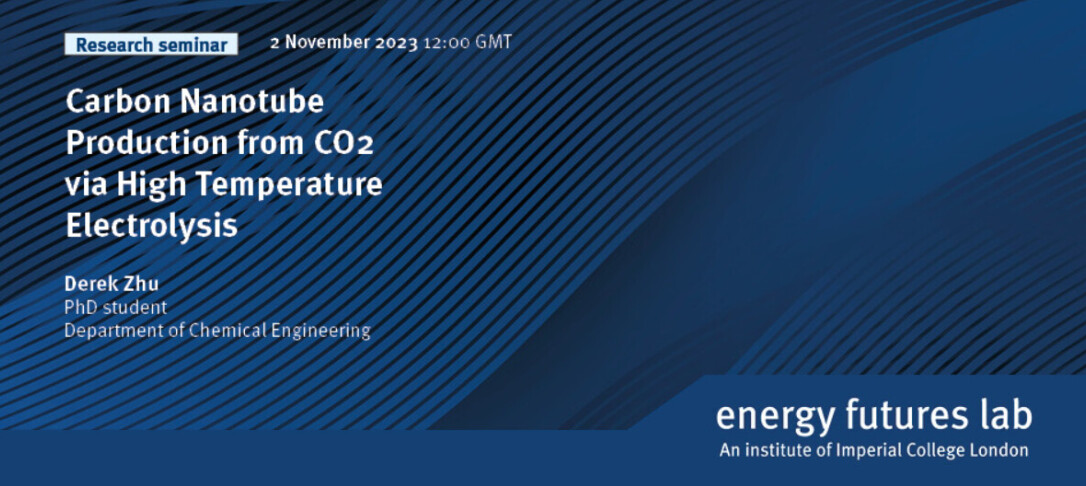
Carbon Nanotube Production from CO2 via High Temperature Electrolysis
As global warming becomes a largely accepted fact, carbon capture and utilization (CCU), along with carbon capture and sequestration (CCS), has become an important strategy for mitigating CO2 emissions. The implementation of CCU is facing two main problems: (i) the low cost-effectiveness and (ii) the extra CO2 emission and energy consumption during CO2 conversion. A new CO2 utilisation process involves its conversion into carbon nanotubes – could potentially solve these two problems – as has been reported in the literature.
Carbon nanotubes (CNTs) are tubular structures consisting of graphitic carbon. Their mechanical strength, electrical conductivity, and thermal conductivity accelerated their application in nanoelectronics, catalysts, lithium-ion batteries, etc. However, the high cost of CNTs (about $114,000 per tonne) currently limits their use. Production of CNTs via high temperature electrolysis of CO2 in molten carbonate salts has the potential to significantly reduce their production cost (on the order of $660 per tonne) and with a net environmental benefit. The method involves several key steps: (i) selective exothermic absorption of CO2 from flue gas by a molten alkali metal oxide electrolyte (e.g., Li2O), forming an alkali metal carbonate; (ii) electrolysis of metal carbonate, producing CNTs and oxygen gas, while regenerating the metal oxide; (iii) heat released by CO2 absorption maintains the high temperature required for electrolysis.
In this research, carbonate ions were electrochemically reduced to carbon products including CNTs, carbon nanofibers and carbon nanoparticles on iron cathode in molten Li2CO3 electrolyte at 800 °C. The initial electrolysis current density was maintained at 200 mA/cm2, with the resulting cell potential difference in the range 1.75 V – 1.92 V, substantially higher than the thermoneutral potential of 1.42V at this temperature. The carbon products were characterised with scanning electron microscopy and transmission electron microscopy. We have been systematically investigating and relating different reaction parameters to the properties of the synthesised carbonaceous products. Electrochemical measurements were made to study the reactions taking place in the electrolytic cell, using various combinations of iron and nickel as anodes/ cathodes, and comparing results with thermodynamic predictions. Experiments are now being carried out to study the mechanism and kinetics of the CNT nucleation and growth process. Our goal is to understand the electrochemical micro-kinetics and subsequently optimise the reaction process for prototype development.
Biography:
Derek Zhu is a third year PhD student at Imperial College London and funded by the Department of Chemical Engineering. His PhD research focuses on tackling global warming and the utilisation of carbon dioxide in carbon nanotube production with electrochemical methods. Before Derek started his PhD, he has just finished his MRes research on carbon aerogels in Department of Chemistry at Imperial. Before he joined Imperial, Derek received a BSc degree in Chemistry from University of Reading. He is passionate about energy conversion and storage technology.
About Energy Futures Lab
Energy Futures Lab is one of seven Global Institutes at Imperial College London. The institute was established to address global energy challenges by identifying and leading new opportunities to serve industry, government and society at large through high quality research, evidence and advocacy for positive change. The institute aims to promote energy innovation and advance systemic solutions for a sustainable energy future by bringing together the science, engineering and policy expertise at Imperial and fostering collaboration with a wide variety of external partners.